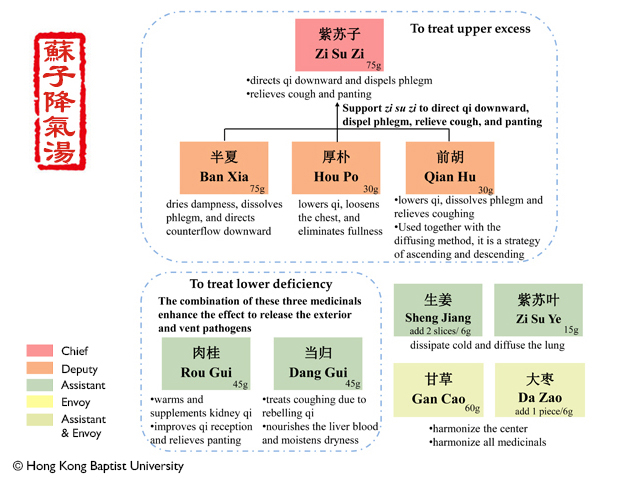
| Chief | Zi Su Zi |
| To treat upper excess. |
| Deputy | Ban Xia |
| To treat upper excess. |
| Deputy | Hou Po |
| To treat upper excess. |
| Deputy | Qian Hu |
| To treat upper excess. |
| Assistant | Rou Gui |
| To treat lower deficiency. |
| Assistant | Dang Gui |
| To treat lower deficiency. |
| Assistant | Sheng Jiang |
| |
| Assistant | Su Ye |
| |
| Assistant&Envoy | Gan Cao |
| |
| Assistant&Envoy | Da Zao |
|